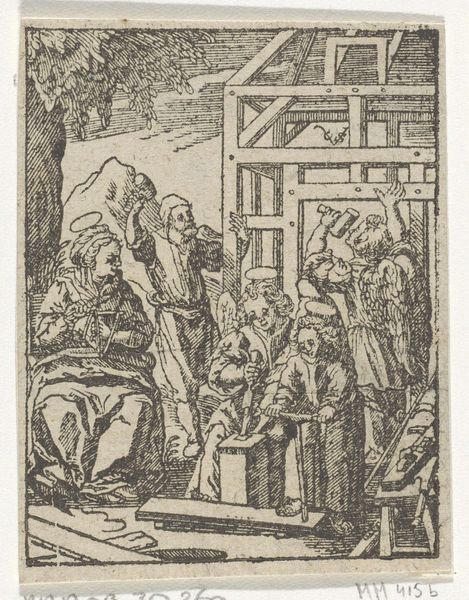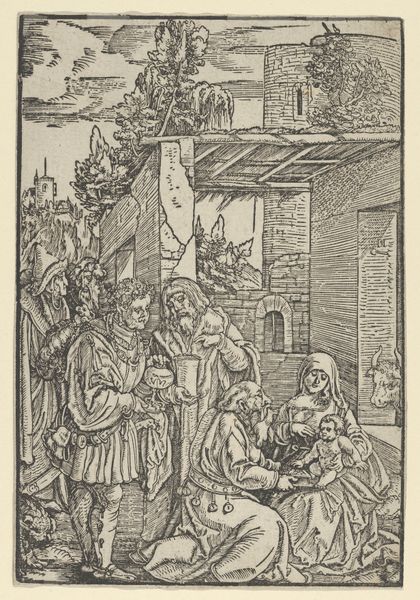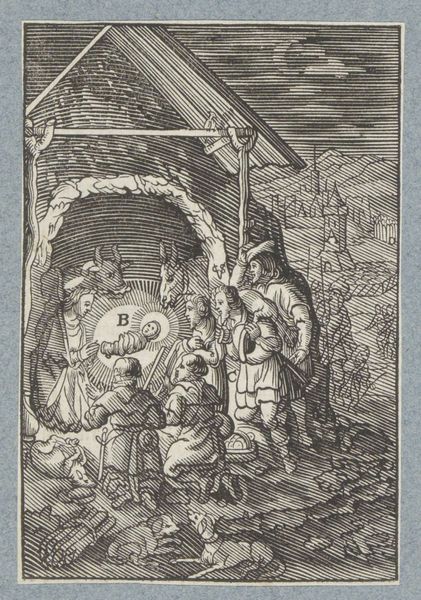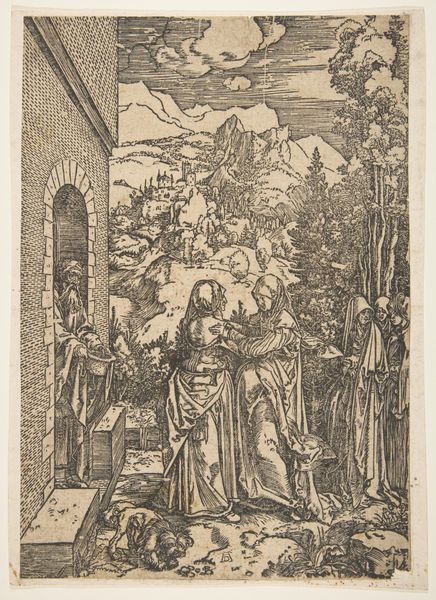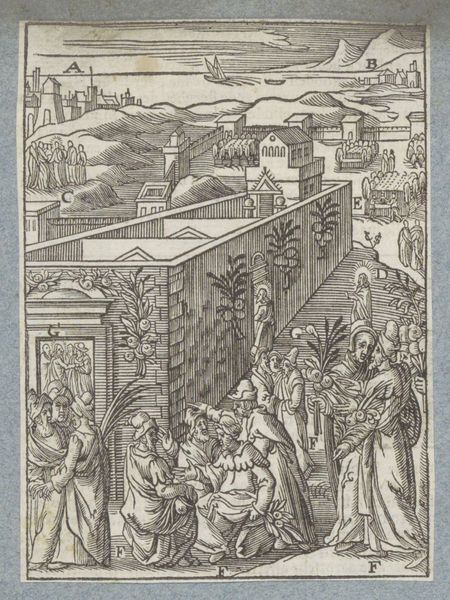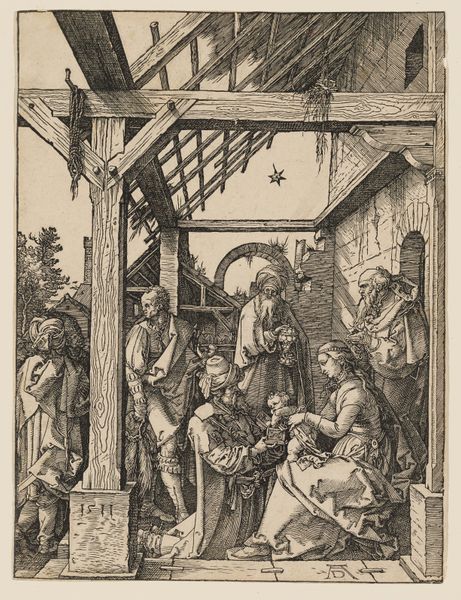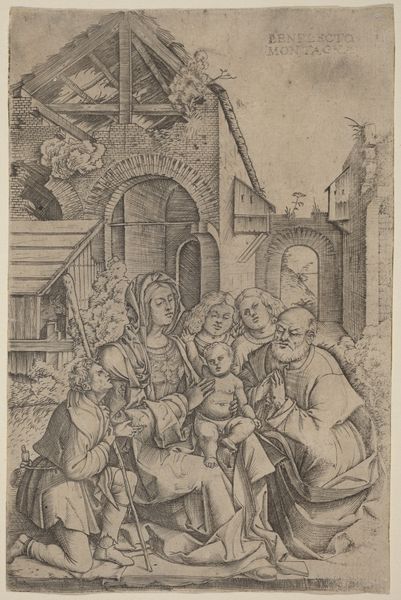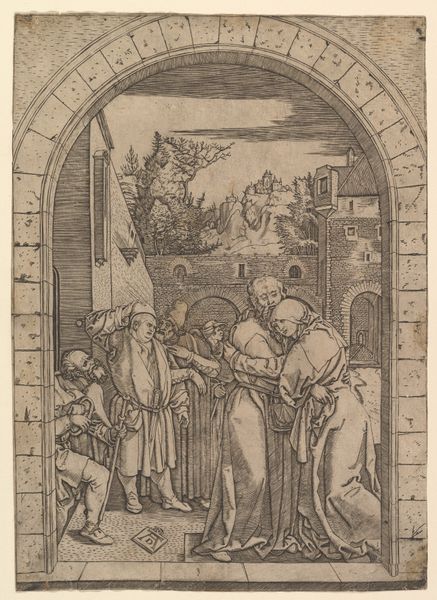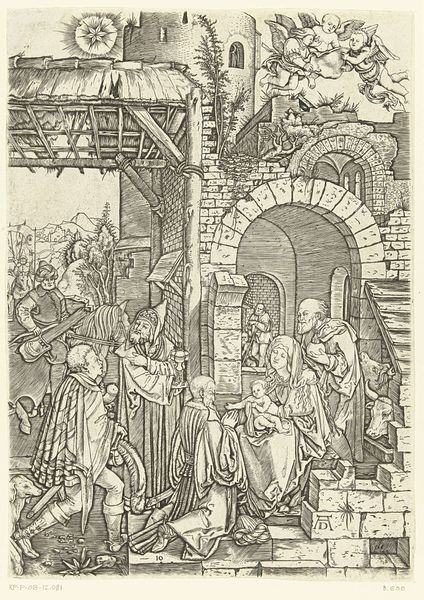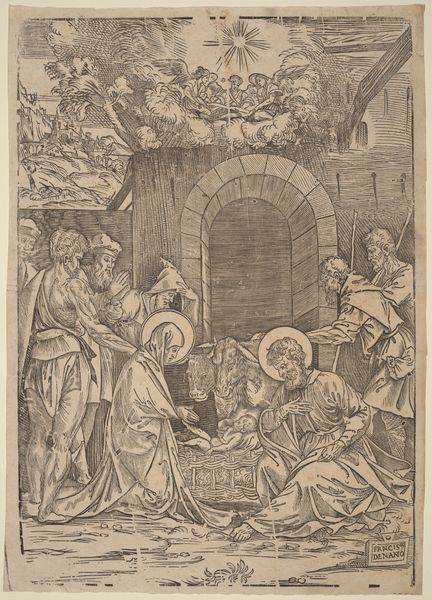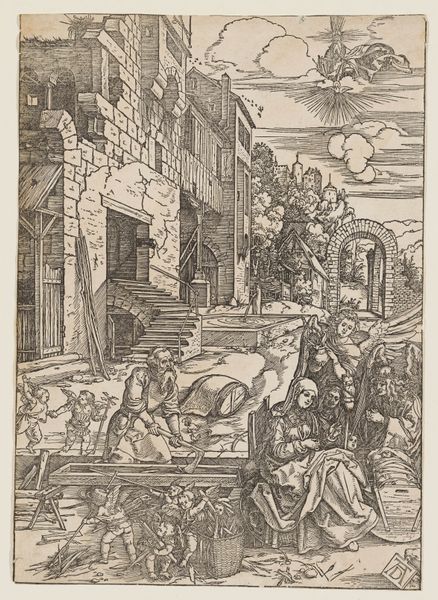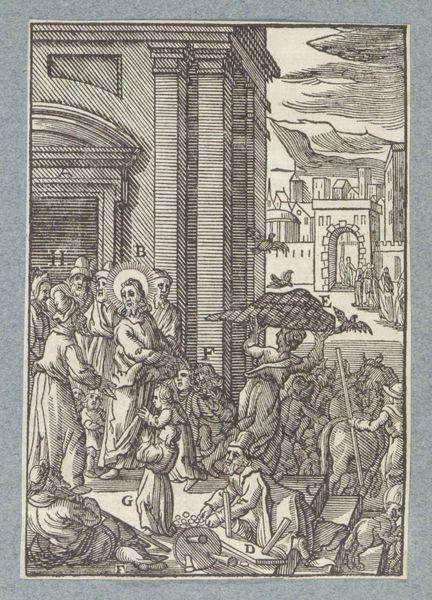
drawing, print, ink, woodcut, engraving
#
drawing
#
narrative-art
# print
#
landscape
#
figuration
#
11_renaissance
#
ink
#
woodcut
#
history-painting
#
italian-renaissance
#
engraving
Copyright: National Gallery of Art: CC0 1.0
Curator: Let's discuss "The Adoration of the Magi," an engraving—or possibly a woodcut—by Francesco Denanto. It's a classic Renaissance composition, quite detailed. Editor: It feels very austere, almost primitive. The sharp contrasts of black and white, and the lines create a really stark visual. You immediately see the work, the crafting. Curator: Absolutely. And the material choices--woodcut or engraving, whatever the specifics here--are significant. Printing allowed for the wide dissemination of images, which reshaped religious and secular thought during the Renaissance. How might Denanto's choice of printmaking have impacted the imagery itself? Editor: Well, printmaking was a relatively accessible medium. It allowed Denanto to potentially reach a broader audience beyond the elite who might commission paintings. And the act of distributing religious iconography via prints meant shifting power away from traditional institutions. Curator: Precisely. The scene depicts the Three Kings presenting gifts to the infant Jesus. It's a narrative freighted with political symbolism—foreign dignitaries acknowledging the authority of Christ, and by extension, the Church, though remember, it was far from monolithic then. Consider how this image could be used. Editor: Right. The detail put into the kings' robes, and their vessels of gold are intriguing from the standpoint of class. Even if intended for widespread use, it still conveys opulence; it is not democratized entirely. And the way the architectural backdrop dominates suggests more than a humble stable setting, doesn't it? It almost elevates the Holy Family into a more established power structure. Curator: Indeed. The built environment conveys status and suggests permanence. And let's note the landscape visible behind the figures--this brings a whole different set of iconographies, linking the central event to larger social spaces. Printmakers didn't just disseminate images; they propagated ideologies. Denanto may very well have hoped to make an enduring statement regarding the prevailing societal structures and spiritual frameworks of his era through something he chose to reproduce mechanically. Editor: So ultimately, it comes down to more than simple craftsmanship. These works gained authority simply through wide distribution, influencing faith and politics within Italy and beyond. Curator: Agreed. This print serves as a compelling example of the intersection between artistic creation, material dissemination, and the shaping of public perception in Renaissance society.
Comments
No comments
Be the first to comment and join the conversation on the ultimate creative platform.
